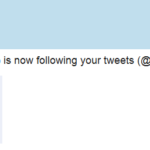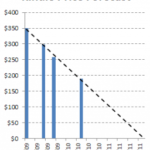| The Good: Good use of “Testimonial Style” Good location
| The Bad: Does anyone really talk like that? A list of complaints isn’t going to WIN votes
|
The 2010 Australian election is less that a week away, so I thought I would have a quick look at who is winning the battle for minds with video. Within the last eight years, across two election cycles, the rise of the internet, youtube and twitter has caused political communicators to change their tactics as they try to adjust to the way people consume media. Julia Gillard was already caught napping when she told Australia we should be “moving forward” over and over again at the election announcement. Twitter lit up with people counting the number of times she had said it. To make matters worse, her advisers don’t seem to care that people were already sick of the phrase before she uttered it.
Traditionally, withing advertising, you have to win the heart, and the mind will follow. Political parties are mostly poor at understanding this, content with listing off each others failures or successes in the hope that viewers are at home playing a game of i-spy. As a further example of how bored Australians have become with the “he-said- she-said” negativity, former Prime Ministerial wannabe Mark Latham and wastobe Kevin Rudd have had more quality air time than the other to contenders.
The Labour party’s video above is an attempt at winning over the hearts of working people in Western Sydney. Western Sydney is a key marginal seat and is being judged by other commentators as a bell-weather for the whole election. It certainly does a good job of engaging the viewer, with a good use of sound and dialogue. However I would question the value of listing complaints, which will probably do more to turn people onto other parties and independents. Another part of the video that doesn’t sit well is the language. All those embedded clauses makes it hard to follow, which takes people away from the message.
| The Good: Great language Easy to follow Positive message
| The Bad: Less engaging than a testimonial No emotional tie ins The message could become saturated
|
The Australian Liberal party’s main video above could not have been more of a contrast. Overall the positive message is good, and the way Tony Abbott speaks makes it very easy to follow. However over the course of an election campaign, I don’t know how long a message like this will last. Once everyone understands the main position points of a party, the video could just become background noise. There is also a missed opportunity of giving the viewer something to relate to. A quick look at Liberal Party.TV shows that they don’t have any “testimonial” style videos created. This could become a huge missed opportunity as the election moves into its final days, the message will become saturated, and people will probably start saying “I agree with what the Liberals stand for, but I just don’t like Tony Abbott.”
| The Good: Great use of emotion Great use of “action” Subtle Positive
| The Bad: Light on qual. information Unfortunate use of “move forward”
|
The Greens’ main video again uses a completely different style. It is far more subtle, uses far less information, and is the only one to show the “action” part of voting. Even though they have a budget many times smaller than the other parties, the Greens have probably produced the most effective ad. It has some detail in there, it gets the message across clearly, and it has the “real” factor. The voting part of the video may well be critical. Studies into the effect of influence has shown two BIG reasons to show the audience what you want them to do. The first is, unless people can imagine themselves taking that action, they won’t do it. If you want to get someone to alter their behaviour, the best this to do is show someone having a great time doing the new action. Second, you want people to be able to place themselves in the moment of voting, and you want to place the suggestion that they should vote for greens. Otherwise there is no emotional anchor for the action of actually writing down the vote.
The only real problem they may come across is that the video is a little light on information. Whilst it engages the viewers with the main issues of the election, it does not really show what the Greens are going to do about any of them. However, with both of the major parties content to sling rocks at each other, I don’t think they will need to list action points.
As far as the quality of the videos goes, the Greens seem to be ahead. In terms of money spent, we will probably have to wait until the end of the election, however it appears as if Labour, and their trade unions, have it by a nose. How the Greens will benefit from this is, again, something that is yet to be decided.





